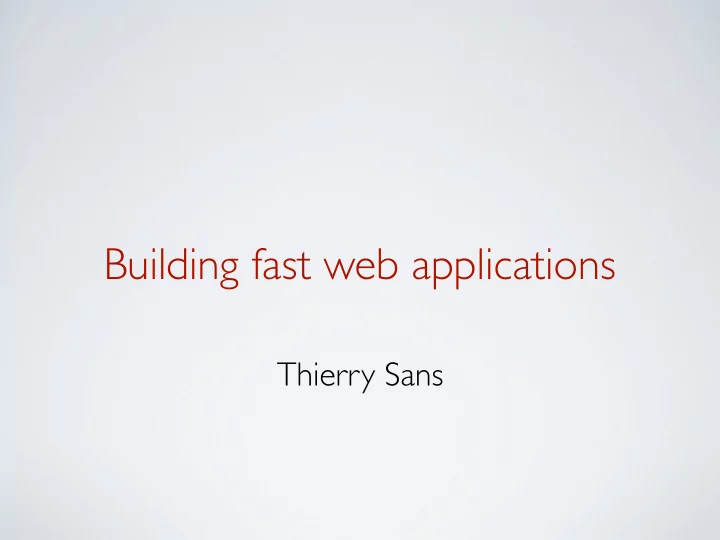

Building fast web applications Thierry Sans
Users respond to speed “Amazon found every 100ms of latency cost them 1% in sales” “Google found an extra . 5 seconds in search page generation time dropped traffic by 20%” “A broker could lose $4 million in revenues per millisecond if their electronic trading platform is 5 milliseconds behind the competition” http://blog.gigaspaces.com/amazon-found-every-100ms-of-latency-cost-them-1-in-sales/
Several Techniques • Backend templates • Frontend packing • HTTP/2 • Long polling
Backend Templates
Our application so far Frontend Backend GET / HTML, CSS Static Content JS, media GET /API/ API Content
Dynamic content (using HTML templates) Frontend Backend Static CSS, JS, media Content GET / HTML Dynamic templates content API Content
Advantages of using templates in the backend • Better code reuse and maintenance • Faster loading time (avoid unnecessary ajax requests)
Better code reuse and maintenance Some pages might share • headers (title, JS and CSS) • page organization ( div tags structuring the page) • footers (if any)
Faster loading time • Dynamic pages are built on the server and can be retrieved with 1 HTTP requests (instead of 2 with the ajax API call) • Dynamic pages can be cached on the server
Template engines compatible with Express • Pug • Moustache • EJS • Jade • ... and others https://expressjs.com/en/guide/using-template-engines.html
Frontend packing
The problem Frontend GET / GET /js/lib.js GET /js/index.js GET /style/index.css GET /style/generic.css Backend
The solution - using a frontend packer e.g. webpack.js Frontend GET / GET /js/bundle.js Backend
HTTP/2
HTTP/2 HTTP/2 enables multiplexing ➡ send multiple HTTP responses for a given request (a.ka push ) • Proposed by Google (called SPDY) • Adopted as an standard in 2015 (RFC 7540) • HTTP/2 is compatible with HTTP/1 (same protocol)
HTTP 1.1 GET / 200 GET /js/bundle.js 200 HTTP 2.0 GET / 200 200 push
HTTP/3 (standard draft) HTTP/1 & 2 HTTP/3 syn quic TCP handshake syn/ack TLS handshake ack quic quic TLS ClientHello ack HTTP Request HTTP TLS ServerHello HTTP Response TLS handshake ack TLS Finished ack ➡ Use UDP instead of TCP HTTP Request ack HTTP Chrome in Dec'19 HTTP Response Firefox in Jan'20 ack fin TCP handshake ack fin ack
Long Polling
Short Polling vs Long Polling Short Polling • The frontend request an update from the backend every few seconds • The backend replies right away regardless if there is an update or not ๏ Many request/responses are wasted Long Polling • The frontend request an update from the backend and wait for the response • The backend replies to the update request only when there is an update ✓ No request/response wasted ✓ Updates are processed as soon as they arrived
Long Polling GET /update GET /update GET /update Web App GET /update POST /messages GET /update
Recommend
More recommend